MARKET OVERVIEW
The Global Telehealth and Telemedicine market is one of the major forces redefining the manner in which health care is provided across geographical borders. It's also an emerging platform that gives solutions to address modern health issues, supported by progress in digital communication and medical technologies. With the capability to utilize the opportunities of remote diagnostics, consultation, and monitoring, it breaks up the classic doctor-patient equation, ensuring improved accessibility and efficiency.
This is perhaps the most distinguishing characteristic of this market: it connects the digital health platform with medical expertise, thus bringing about a perfect interface for the patient and providers. It reaches beyond traditional medicine to include tailored health management instruments, monitoring for chronic diseases, and mental wellness assistance. These are further enhanced through artificial intelligence and data analytics for accurate diagnostics and personalized treatment options. This approach is very helpful in the management of non-communicable diseases and support to aging populations, especially in remote locations where specialized care is scarce.
The Global Telehealth and Telemedicine market also reshapes patient expectations. Virtual consultation and remote monitoring of health appeal to a digitally literate population with adequate knowhow of their value time and efficiency. It represents an opportunity for healthcare providers to optimize workflows and allocate resources appropriately. It saves unnecessary travel as well as long waiting times, wherein physicians can extend their reach and focus on more quality care.
However, the market is not only limited to patient-provider interaction. It opens the way to advanced medical education and collaborative research. Virtual training platforms are now being used to train healthcare professionals, which would enable them to acquire new skills and knowledge regardless of where they are located. Furthermore, such platforms encourage researchers to collaborate, share data and ideas that would be crucial in the discovery of medical breakthroughs. This kind of global connectivity is a very important driver for progress in the healthcare sector.
Security and data privacy will continue to be at the forefront of the market's growth. Health information will need to be digitally exchanged, but the industry must take serious measures in cybersecurity and meet regulatory standards in order to keep patient confidentiality intact. This will be crucial in order for users to trust the service and the telehealth and telemedicine services will be adopted across the board.
Another probable trend in the market is the heightened collaboration between technology companies, health care providers, and policymakers. Such partnerships are likely to drive the filling of infrastructural gaps and scale-up solutions to address global problems. The fusion of technology and healthcare will be driving innovation as more solutions become achievable for the population with various needs.
The Global Telehealth and Telemedicine market will redefine health care delivery on the face of this earth, as it will represent greater focus on access, efficiency, and innovation, potentially closing healthcare gaps while delivering equitable care for populations anywhere in the world. This industry presents a testimony to the transformative powers of technology in improving human life, for better-quality health care will have no borders.
Global Telehealth and Telemedicine market is estimated to reach $978,310.59 Million by 2032; growing at a CAGR of 27.8% from 2025 to 2032.
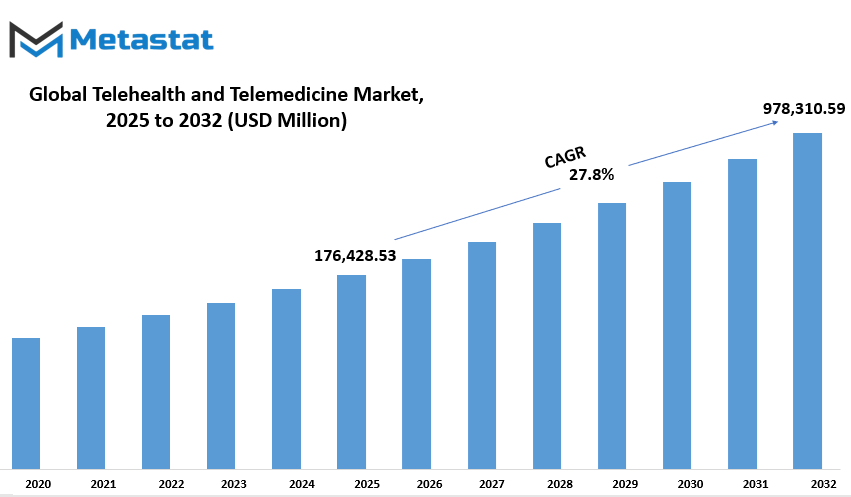
GROWTH FACTORS
With remote healthcare services currently gaining a rapidly ever-increasing demand, global telehealth and telemedicine market has really grown expansively over a period of past few years. Its growth primarily points towards making up for these post-pandemic after-times people started realizing healthcare accessibility needs- which could provide access between patients across different segments and locations worldwide.
They are nowadays receiving timely medical advice and diagnoses for treatment without needing to leave home because of the changing times and improvements in technology. Improvement in digital health technologies, internet connectivity, virtual consultations, and remote monitoring have further encouraged this trend. Despite all this, the market still faces some challenges.
Some of the major deterrents to growth include security and privacy concerns associated with data protection, as most patients are afraid to employ telemedicine solutions for the fear of compromising personal health information. Regulatory issues and lack of proper reimbursement in some regions are also significant challenges for telehealth service providers to operate smoothly without glitches. These are impediments that become a hindrance to growth within the market.
Despite such challenges, though, the outlook for the future of the telehealth and telemedicine market holds promise because more AI-driven solutions for telemedicine are being developed further. This leads to personal health care in real time, during which the telemedicine service becomes personalized and addresses the specific need of each client.
It can improve diagnosis accuracy, ease medical procedures, and provide predictive information to further improve patient outcomes in general. Such innovations are not only a bridge to address the existing gaps in healthcare delivery but also opportunities for providers to reach out and serve underserved populations. It will be important in the future, as the market continues to evolve, to look at the already existing concerns as well as avail technological advancements. Better security measures and transparent data handling policies can calm the fears of patients and motivate adoption.
Implementing stakeholders need to collaborate with the policy regarding regulatory issues that come up for reimbursement frameworks which enable the telemedicine services' expansion across several regions.
When these barriers are overcome and innovation is embraced, the full potential of the global telehealth and telemedicine market may be released to transform health care delivery throughout the world. In short, the growing demand for telehealth and telemedicine due to the need for remote healthcare and the growth of digital technology with increased connectivity propels it. However, concerns such as data privacy, regulatory hurdles, and reimbursement constraints remain. Still, AI-driven solutions and concerted efforts by businesses to address concerns will ensure that the market is full of promise for growth in the future.
MARKET SEGMENTATION
By Type
The Global Telehealth and Telemedicine market is growing fast with the advance in technology and an increasing need for accessible health solutions. The market has garnered a lot of attention because it connects patients to healthcare providers in innovative ways of delivering medical services. With telehealth and telemedicine, a person can sit at home, consult with the doctor, receive diagnostic tools, and monitor one's health status without necessarily physically visiting a health care facility. The flexibility and affordability have made it easy for patients to seek medical practitioners and vice versa.
In this market, telemedicine has been categorized into three main varieties: Real-time Telemedicine, Remote Patient Monitoring, and Store-and-Forward Telemedicine. The market for Real-time Telemedicine, worth $90,790.88 million, is about live interaction between patients and healthcare providers over video calls or something similarly designed. With this, the patient will immediately get a medical consultation and treatment, thereby saving as much time and effort compared to visiting the clinic or a hospital. Whereas devices and sensors enable remote patient monitoring through the tracking of patient information sent to healthcare practitioners.
This would include telemedicine applied in monitoring chronic conditions while not necessarily physically seeking care through numerous visits with doctors. Then there is Store-and-Forward Telemedicine; patient data and even medical reports, images sent for analysis. It finds excellent utility in applications that require careful assessment to make appropriate decisions in subsequent treatments.
Growth in telehealth and telemedicine market: Telehealth and telemedicine has further been stimulated by an enhanced sense of awareness as well as a greater embrace of digital resources by healthcare setups worldwide. In their quest for investment, both government and private establishments have looked to capitalize on this service potential through infrastructure spending for its full access across borders. Such integration is particularly important in areas that are distant from medical facilities. By doing so, it becomes easy to broaden quality care to most people by integrating telehealth and telemedicine with already existing healthcare frameworks.
In conclusion, the Global Telehealth and Telemedicine market represents a transformative shift in healthcare delivery. By focusing on Real-time Telemedicine, Remote Patient Monitoring, and Store-and-Forward Telemedicine, this market addresses the diverse needs of patients and providers, paving the way for a more accessible and efficient healthcare system.
By Mode of Delivery
Major drivers in the significant growth being experienced in the Global Telehealth and Telemedicine market are technological advancements and a greater emphasis on more accessible healthcare solutions. Based on mode of delivery, the market has been classified into three main segments: web-based, cloud-based, and on-premise. Each of these delivery mechanisms separately plays a crucial role in addressing the diverse needs of healthcare providers and patients.
The web-based approach has benefit users in the access of telehealth and telemedicine services through internet browsers without extensive software installations. This method provides a practical and cost-effective solution for healthcare facilities, especially in regions with limited resources. This eliminates the need for complex infrastructure, thus supporting providers in providing remote consultations, dealing with patient data, and executing proper care at the right time.
On the other hand, cloud-based telehealth solutions have increased in popularity for their scalability and flexibility. Because data is stored on the cloud, the healthcare provider is able to obtain critical information remotely, which allows smooth communication between a patient and doctor. This approach also supports compatibility with other health digital tools for the overall smooth delivery of care. Moreover, cloud-based services frequently include strong measures for data security, which could alleviate concerns with regard to maintaining confidentiality of the patient and compliance with regulatory standards.
The on-premise mode of delivery caters to organizations that wish to have their telehealth and telemedicine solutions on site. In the on-premise mode, there is total control over how data will be managed, thus ensuring data integrity, which in turn forms the basis for all those institutions handling sensitive information. However, there is a more initial investment made on hardware and software, the system is cherished as it remains self-sustained even with connection issues since one does not necessarily rely on outside networks for function.
Each of the delivery modes has its own benefits and serves different purposes, depending on the preference and need of the healthcare industry. Web-based systems are most cost-effective and easy to implement, cloud-based solutions are mainly focused on accessibility and scalability, and on-premise setups focus on control and reliability. In combination, these delivery modes enable healthcare organizations to select a delivery method that fits their operational objectives, resource capabilities, and patient care strategies.
The continued evolution of the Global Telehealth and Telemedicine market is a testament to the importance of these delivery methods. As technology advances and healthcare needs grow, the ability to choose the most suitable mode of delivery will remain essential for enhancing the accessibility, quality, and efficiency of care worldwide. This adaptability ensures that telehealth and telemedicine will continue to play a pivotal role in transforming the way healthcare is delivered.
By Specialty
Growth in the global telehealth and telemedicine market is driven by technological advancements as well as growing demand for available healthcare solutions. This market avails convenience to patients and their healthcare providers with access to medical services connecting them across the world. The market is growing incredibly fast, driven by a need for efficient healthcare delivery systems, especially in underserved communities.
Among the segments of this market, specialty services like dermatology, psychiatry, and cardiology are also emerging as dominant services because these are effective specialty services that specifically target the identified needs of patients. In dermatology, telemedicine has simplified consultations for skin conditions, enabling patients to receive expert opinions without the need for in-person visits. This is especially beneficial for people in remote areas who may lack access to dermatological specialists. High-definition imaging and secure platforms allow dermatologists to assess skin issues, recommend treatments, and even monitor progress over time.
Psychiatry is another sector where telehealth is having an impact. More and more mental health care now comes in virtual sessions, offering an aspect of confidentiality and convenience to encourage more individuals to seek such help. People can receive therapy and counseling right from their comfort of homes as it helps bridge the gap caused by stigma and geographical constraints. It is particularly useful in times of crises when mental health support is the most crucial need.
Cardiology also has a high stake in the telehealth and telemedicine market. Remote monitoring tools and virtual consultations enable cardiologists to keep track of heart health in real-time, preventing severe complications from arising. They can detect early signs of potential problems and manage chronic conditions better. For patients with mobility issues or continuous monitoring needs, telemedicine presents a practical solution to ensure timely care.
The integration of telehealth and telemedicine in such specialties holds tremendous potential to transform healthcare delivery. These services, by minimizing the need for traveling and cutting wait times, better patient outcomes can be ensured as well as lead to an effective healthcare system. The trend in technology coupled with growing awareness regarding the benefits of telemedicine is going to further enhance the adoption of the same in such areas.
Overall, the global market for telehealth and telemedicine reflects a broader shift toward an accessible and a more specialized platform for healthcare options. Dermatology, psychiatry, and cardiology are well-positioned leaders in this broader shift, indicative of the potential for advancing patient care for a wide range of medical conditions.
By End Users
The Global Telehealth and Telemedicine market has seen high rates of growth in the recent years. This happened because there is a growing need for available healthcare solutions. Through the expansion of technology in medicine and greater awareness about placing patients at the center, telehealth and telemedicine are now critical innovations in solving healthcare problems around the world. They not only close the gap between healthcare providers and their patients but also have helped in setting up even more potent and effective medical services.
The market, based on end users, is primarily divided into hospitals, clinics, and home care settings. Hospitals have adopted telehealth to control patient loads, especially during critical times when physical consultations may not be possible. This has enabled them to provide timely diagnoses and treatments while reducing unnecessary hospital visits. Clinics have also benefited a lot since telemedicine enables them to reach rural or underserved areas.
The patient may be someone who had difficulties reaching a doctor previously. Telemedicine now enables access to doctors for these patients. Moreover, home care has emerged as an increasing favorite in terms of care, especially in the context of chronic disease management and post-surgical recovery.
Telehealth has changed the way health care operates through its ability to monitor patients with specific mobility challenges or those in far-flung areas remotely. In addition, it has helped prevent disease by promoting regular check-ups without physically visiting the doctor's premises. This has resulted in knowing much earlier about diseases and managing them consequently, which would lead to a positive health outcome.
Increasing awareness and appreciation of benefits from telehealth and telemedicine on both patients and providers. Telehealth facilitates optimizing the availability of resources used and lowers their operating costs since traveling to healthcare facility expenses is much lower for both providers and the patient. Developments in modern technology, secure video conferencing systems, as well as personal wearable health monitor systems, improve telehealth practice services.
In conclusion, the Global Telehealth and Telemedicine market continues evolving as it adapts to the healthcare sector's changed needs. Among the first on this list of transformation are the hospitals, clinics, and home care settings through the use of technology to render efficient, accessible, and patient-focused care. This trend shows not only the importance of innovation in the healthcare sector but also the prospects of telehealth and telemedicine in shaping future medical services.
|
Forecast Period |
2025-2032 |
|
Market Size in 2025 |
$176,428.53 million |
|
Market Size by 2032 |
$978,310.59 Million |
|
Growth Rate from 2024 to 2031 |
27.8% |
|
Base Year |
2024 |
|
Regions Covered |
North America, Europe, Asia-Pacific, South America, Middle East & Africa |
REGIONAL ANALYSIS
In turn, the growing global telehealth and telemedicine market is the result of its unique contribution made by various geography regions. As far as geographic segments are concerned, this telehealth and telemedicine market comprise North America, Europe, Asia-Pacific, South America, and Middle East & Africa, and each plays a different position due to distinct technological advancements and healthcare infrastructure associated with its market conditions.
The North American market is further segmented into the United States, Canada, and Mexico. This region is highly adopted in advanced technologies, has strong healthcare systems, and government policies encourage the use of telemedicine. The U.S. is the leader in this regard because of its well-developed infrastructural facilities and integration of telehealth into rural and urban healthcare services.
The rest are of the major contributors, that is, the United Kingdom, Germany, France, Italy, and the rest of Europe. England and Germany pull out a step in advance by taking digital healthcare as they understand the threat due to the fast-aging population through telemedicine. France and Italy do the same but with much improved services and patient care with the advancement of digitalization.
Huge potentials remain in the Asia-Pacific region. The country bifurcates it into India, China, Japan, South Korea, and rest of Asia-Pacific. High-value growth of its health care system and increased penetration by the Internet combined with increased telehealth services knowledge propel this region's growth. Countries like India and China have embraced these technologies to bridge gaps in healthcare delivery, particularly in underserved areas. Meanwhile, Japan and South Korea excel in integrating telemedicine into their technologically sophisticated healthcare frameworks.
South America can be broken into three regions: Brazil, Argentina, and the rest of South America. In these regions, telehealth makes healthcare distribution more uniform and provides equal access in remote areas. Brazil leads the way with innovative telemedicine uses that enhance health outreach. Argentina follows closely by harnessing digital solutions to improve patient care.
Lastly, the Middle East & Africa includes GCC Countries, Egypt, South Africa, and the rest of the Middle East & Africa. The states make up the most populous opportunities for telehealth growth as efforts are forwarded to improve healthcare accessibility in rural regions. GCC countries and South Africa are remarkable due to their investment in technology-driven healthcare solutions, and Egypt is gradually opting for telemedicine to meet the increasing demand for accessible and efficient medical services.
This segmentation portrays how varied regions are making a difference in the global telehealth and telemedicine market. It points to the vast implications of this approach to health.
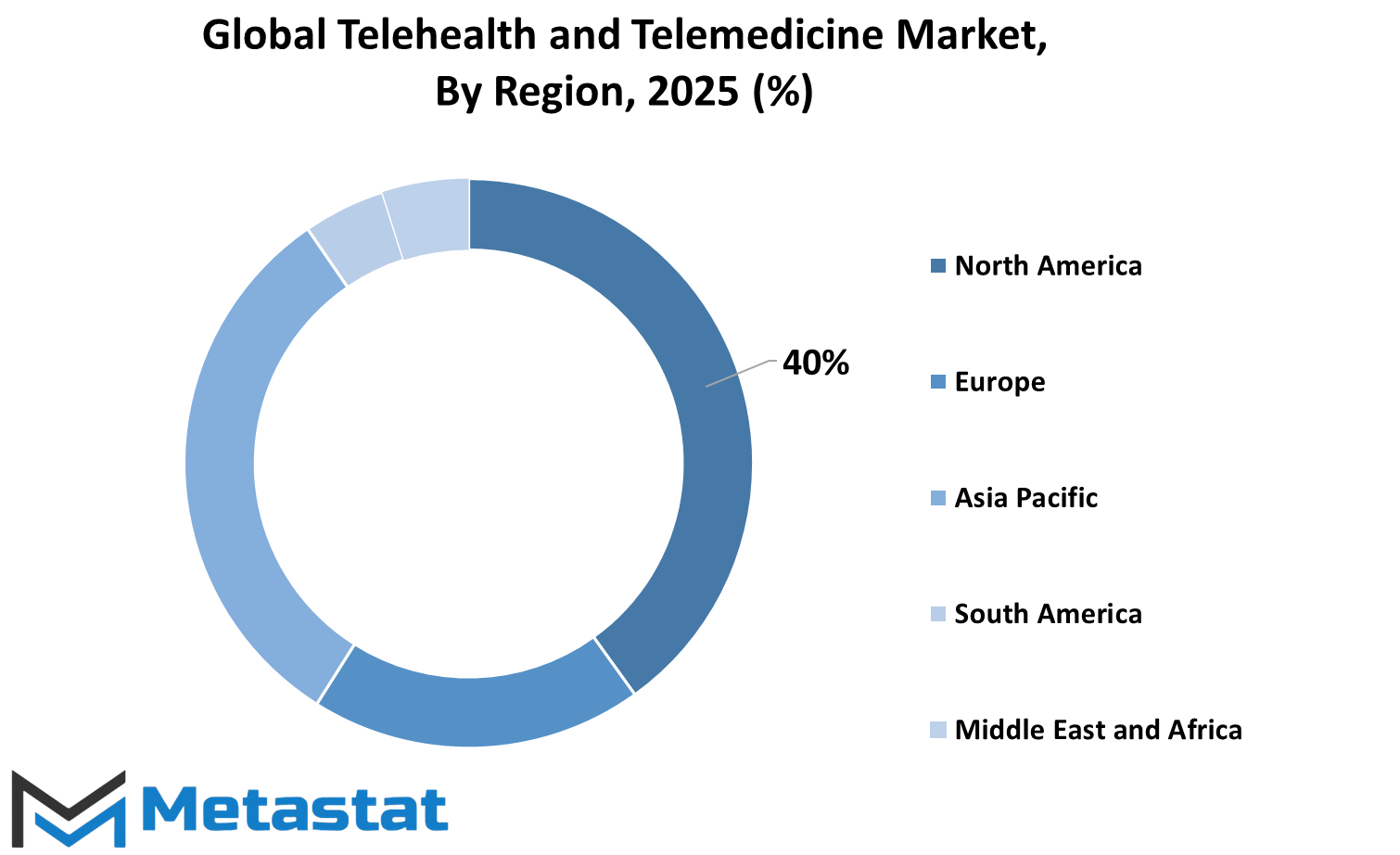
COMPETITIVE PLAYERS
The Global Telehealth and Telemedicine market have witnessed a dramatic increase in growth in the recent past, driven by an improvement in technological advancement and increasing demands for accessible health solutions. These services have significantly transformed the face of healthcare delivery; they bridge patients and providers' gap. It gives individuals the means to receive remote medical care by not having to visit a medical provider in person.
Major industry players who have led to expansion and innovation of the industry are Teladoc Health, Inc., Amwell (American Well Corporation), MDLIVE Inc., and Doctor on Demand, Inc., who offer a connection of patients to healthcare professionals by means of virtual consultation. Philips Healthcare, Siemens Healthineers, and GE Healthcare, as experts in medical technology, utilize this area for further enhancement in telehealth through the incorporation of more advanced diagnostic tools and imaging solutions. Medtronic PLC has incorporated telemedicine into chronic disease management, improving outcomes for patients requiring ongoing care.
Epic Systems Corporation has played a very crucial role by incorporating telehealth capabilities into electronic health record systems, which makes it easier for healthcare providers to work through their workflow. InTouch Health, acquired by Teladoc Health, focuses on virtual care delivery, and AMD Global Telemedicine is dedicated to telemedicine equipment and software supporting clinical consultations. Blue Sky Telehealth, Eagle Telemedicine, and Access TeleCare, LLC have added to the richness of the market by offering niche telemedicine services tailored to hospitals and healthcare facilities.
The factors which accelerated the adoption of telehealth and telemedicine are increasing healthcare costs, a growing aging population, and the necessity for continuous care during health crises. In fact, the accessibility of care from home in association with the consultation of specialists without considering geography has made telemedicine an indispensable part of modern healthcare systems.
These companies are at the forefront of innovation, pushing telehealth and telemedicine into healthcare delivery as the market continues to grow. Their work addresses immediate needs in healthcare while laying down the foundation for a more connected and efficient future in patient care.
Telehealth and Telemedicine Market Key Segments:
By Type
- Real-time Telemedicine
- Remote Patient Monitoring
- Store-and-Forward Telemedicine
By Mode of Delivery
- Web-Based
- Cloud-Based
- On-Premise
By Specialty
- Dermatology
- Psychiatry
- Cardiology
By End Users
- Hospitals
- Clinics
- Home Care Settings
Key Global Telehealth and Telemedicine Industry Players
- Teladoc Health, Inc.
- Amwell (American Well Corporation)
- MDLIVE Inc.
- Doctor on Demand, Inc.
- Philips Healthcare
- Siemens Healthineers
- GE Healthcare
- Medtronic PLC
- Epic Systems Corporation
- InTouch Health (a Teladoc Health Company)
- AMD Global Telemedicine
- Blue Sky Telehealth
- Eagle Telemedicine
- Access TeleCare, LLC
WHAT REPORT PROVIDES
- Full in-depth analysis of the parent Industry
- Important changes in market and its dynamics
- Segmentation details of the market
- Former, on-going, and projected market analysis in terms of volume and value
- Assessment of niche industry developments
- Market share analysis
- Key strategies of major players
- Emerging segments and regional growth potential



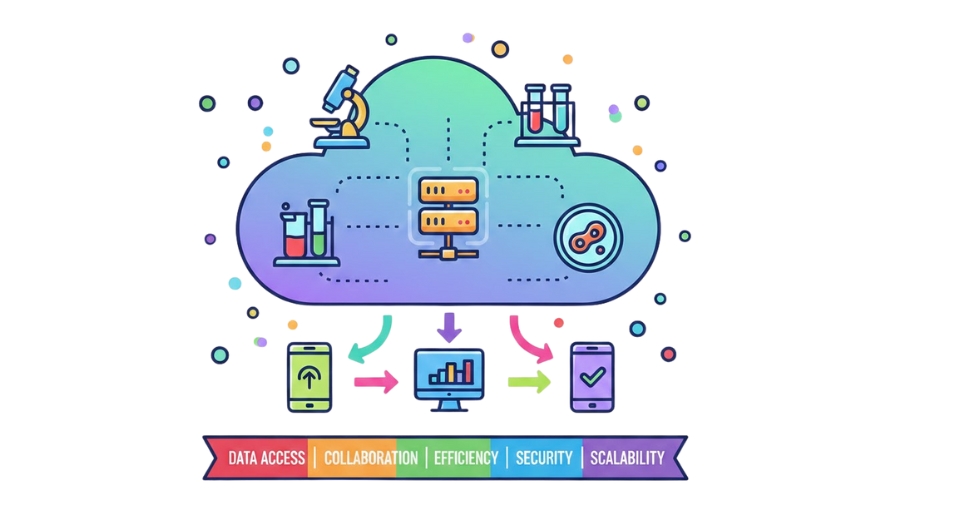
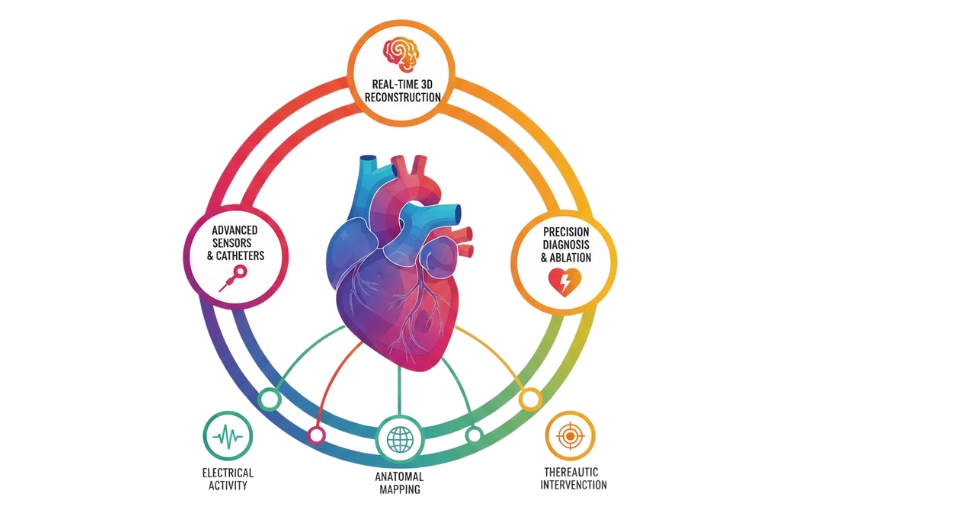

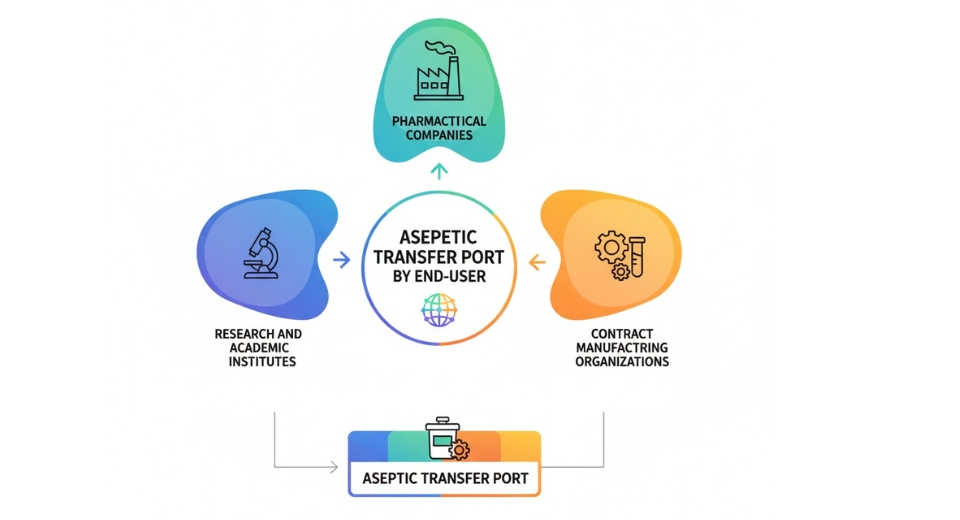

 US: +1 3023308252
US: +1 3023308252






